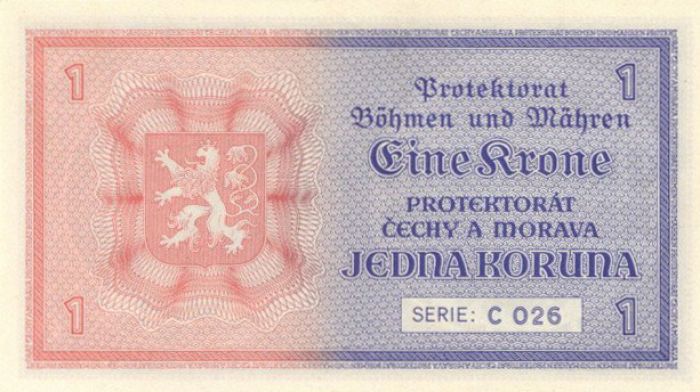Bohemia & Moravia - P-3a - Koruna - Foreign Paper Money
Inv# FM2297 Foreign Paper Money
1 Koruna, P-3a.
The Czechoslovak koruna (in Czech and Slovak: Koruna československá, at times Koruna česko-slovenská; koruna means crown) was the currency of Czechoslovakia from April 10, 1919, to March 14, 1939, and from November 1, 1945, to February 7, 1993. For a brief time in 1939 and again in 1993, it was also the currency in the separate Czech Republic and Slovakia.
On February 8, 1993, it was replaced by the Czech koruna and the Slovak koruna, both at par.
The (last) ISO 4217 code and the local abbreviations for the koruna were CSK and Kčs. One koruna equalled 100 haléřů (Czech, singular: haléř) or halierov (Slovak, singular: halier). In both languages, the abbreviation h was used. The abbreviation was placed behind the numeric value.
A currency called the krone in German and koruna in Czech was introduced in Austria-Hungary on 11 September 1892, as the first modern gold-based currency in the area. After the creation of an independent Czechoslovakia in 1918, an urgent need emerged for the establishment of a new currency system that would distinguish itself from the currencies of the other newly born countries suffering from inflation. The next year, on 10 April 1919, a currency reform took place, defining the new koruna as equal in value to the Austro-Hungarian krone. The first banknotes came into circulation the same year, the coins three years later, in 1922.
This first koruna circulated until 1939, when separate currencies for Bohemia and Moravia and Slovakia were introduced, at par with the Czechoslovak koruna. These were the Bohemian and Moravian koruna and the Slovak koruna.










Ebay ID: labarre_galleries